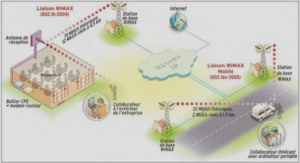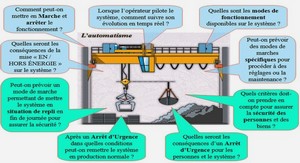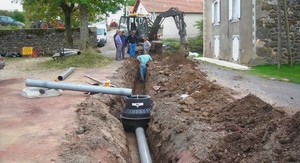The Decadence of the English society in Evelyn Waugh’s A Handful of Dust and Charles Dickens’ Hard Times
History in the making of Victorian era
The Victorian era was a period full of changes; the most important was the reign of Queen Victoria, who ascended the throne in 1837 and ruled the British Empire, restoring stability to the crown. Her reign is considered one of the most prosperous in her time, which eventually became the symbol of a period that took its name, the Victorian Era. Napoleonic Wars finished in 1815, and meanwhile France and the Revolution changed Europe; Great Britain became the main power of the World. In the late nineteenth and early twentieth century, Britain would remain as the leading world power, far above any other. Britain controlled so many areas around the world that the sun always shines in one of them. Victoria reined this large and expansive kingdom during sixty-three years. She was only eighteen years old when she was crowned. Victoria protected the cosmopolitan interests that predominate the epoch and cultivated international relationships between various dynastic families of Europe.The British pound became the currency in world markets; the British fleet was the maximum authority in overseas; factories and the innumerable railroad tracks were the example to follow for all the other powers that imitated the British Industrial Revolution. The change in the way of production soon revolutionized the society and the economy of the world. Meanwhile the development of the railway and other industries promoted the new way of production; Queen Victoria governed her realm courageously influencing the entire world. Her reign, became a symbol of the consolidation of the British Empire, was witness of the rise of the middle-class and characterized by a morality deeply conservative. With Queen’s Victoria reign, England carried out a process of electoral and social reforms. During the Victorian, the family was the fundamental base. The father was the leader, the woman was wife and mother without the same rights that men had, and women were forced to take care of the house and of the children. It was inappropriate for a woman to study at university. In the upper-class women were considered more like angels than humans and they should be cared of any temptation. Factories were considered real prisons in that time. They usually worked fourteen hours in very bad conditions, in dark and unhealthy places. Children under ten years were employees who since the year of five did not earn anything, only food and accommodations. They were beaten not to fall asleep. In groups from fifty to a hundred they were sold to companies where they will stay at least seven years.
The Victorian society
The Victorian society is marked by Queen Victoria’s reign from 1837 to 1901; thus, it is referred to as the Victorian era. Queen Victoria’s sixty four year reign is the longest in British history and the cultural, political, economic, industrial and scientific changes that occurred during her reign were remarkable. When Victoria ascended to the throne, Britain was essentially agrarian and rural, but by the time of her death, the country was vastly urbanized and largely industrialized. The Victorian England in which Dickens lived was fraught with massive economic turmoil, as the Industrial Revolution sent shockwaves through the established order. The disparity between the rich and poor, or the middle and working classes, grew even greater as factory owners exploited their employees in order to increase their own profits. Workers, referred to as the Hands in Hard Times, were forced to work long hours for low pay in cramped, sooty, loud, and dangerous factories. Because they lacked education and job skills, these workers had few options for improving their terrible living and working conditions. With the empathy he gained through his own experience of poverty, Dickens became involved with a number of organizations that worked to alleviate the horrible living conditions of the London poor: Although John Dickens was hard-working, he was rarely able to live within his income, and this brought a series of crises upon his family, which lived under the shadow of menacing social insecurity.5 Dickens several times used his art as a lens to focus attention on the plight of the poor and to attempt to awaken the conscience of the reader. Hard Times is just such a novel: set amid the industrial smokestacks and factories of Coketown, 5 Dicken, Charles: Hard Times, A note by Angus Calder p.7, London Penguin English Library 1969. 15 England, the novel uses its characters and stories to expose the massive gulf between the nation’s rich and poor and to criticize what Dickens perceived as the unfeeling self-interest of the middle and upper classes. Indeed, Hard Times suggests that nineteenth-century England itself is turning into a factory machine: the middle class is concerned only with making a profit in the most efficient and practical way possible. Dickens hammers home his point with vicious, often funny satire and sentimental melodrama. He wanted all his readers to catch his point exactly, and the moral theme of the novel is very explicitly articulated time and again. There are no hidden meanings in Hard Times, and the book is an interesting case of a great writer subordinating his art to a moral and social purpose. Even if it is not Dickens’s most popular novel, it is still an important expression of the values he thought were fundamental to human existence. However, the Victorian society appeared to be stable society because of the lavish lifestyle of the aristocracy and the enormous profits gained by the middle class , yet the emergence of the bourgeoisie also meant a massive increase in poverty and urban over population due to the rural urban migration . Furthermore, women were also oppressed as they were confined to the domestic sphere and they were not welcome in the masculine domain of politics and business. In terms of social structure, the Industrial Revolution witnessed the triumph of a middle class of industrialist and businessmen over a landed class of nobility and gentry. Ordinary working people found increased opportunities for employment in the new mills and factories. This situation is found in Dickens’ novel Hard Times with Josiah Bounderby, a business associate of Mr. Gradgrind. A merchant given to lecturing others, boasting about being a self-made man. He employs many of the other characters of the novel, and his rise to property is shown to be an example of social mobility.
The urban mobility
Queen Victoria’s accession to the English throne and during her reigning was full of events. The country was totally devastated by wars. Thus, we can say it was a period of reconstruction and modernization in all sectors, the time of Industrial Revolution, scientists’ discoveries and inventions made a boom of industries and firms. The Industrial Revolution was a period from eighteen century to the nineteen century where major changes in agriculture and the socio-economic and cultural conditions of the times. It marks a major turning point in human history; almost every of daily life was influenced in some way. Starting in the later part of the eighteen century, there began a transition in parts of Great Britain‘s previously manual labour toward machine-based-manufacturing. It started with the mechanization of the textile industries, the development of iron-making techniques and increased used of refined coal. Trade expansion was enabled by the introduction of canals, improved roads and railways: TIME went on in Coketown like its own machinery: so much material wrought up, so much fuel consumed, so many powers worn out, so much money made. But, less inexorable than iron, steel, and brass, it brought its varying seasons even into that wilderness of smoke and brick, and made the only stand that ever was made in the place against its direful uniformity (Dickens, 126). In Hard Times Dickens was striving to articulate the parts of a civilization, with a minimum of flights down fanciful byways, and with an insistence on the typical and even the average which suited the industrial and the mass aspects of that age. It was the age in which cities like the original of Coketown multiplied by three within a life time in Britain change over from a rural to an urban 22 civilization inside two generation. It happened fast enough to cause actual bewilderment. We can read in the diary of a man like Stephan Blackpool how when he set out on Good Friday 1860 to walk through his native parts of twenty eight years before the industrial villages around the eastern side of Manchester, he found that everything was changed: Villages have grown into large town, and country places where there was nothing but fields are now covered with streets, and villages and large factories and workshops everywhere. I made inquires at many a place after people who had lived there, but they were either dead or gone to America or gone somewhere else.7 Like many other descriptions of Coketown, this passage, from Book the Second, chapter one, emphasizes its sombre smokiness. The murky soot that fills the air represents the moral filth that permeates the manufacturing town. Similarly, the sun’s rays represent both the physical and moral beauty that Coketown lacks. While the pollution from the factories makes Coketown literally a dark, dirty place to live, the suffering of its poor and the cold self-interest of its rich inhabitants render Coketown figuratively dark. Coketown lay shrouded in a haze of its own, which appeared impervious to the sun’s rays. You only knew the town was there because you knew there could have been no such sulky blotch upon the prospect without a town. A blur of soot and smoke, now confusedly tending this way, now that way, now aspiring to the vault of Heaven, now murkily creeping along the earth, as the wind rose and fell, or changed its quarter: a dense formless jumble, with sheets of cross light in it, that showed nothing but masses of darkness Coketown in the distance was suggestive of itself, though not a brick of it could be seen.(Dickens, 145) In stating that Coketown’s appearance on the horizon is suggestive of itself, the narrator implies that Coketown is exactly what it appears to be. The dark sulky blotch hides no secrets but simply represents what is, on closer inspection, a dark, formless town. Built entirely of hard, red brick, Coketown has no redeeming beauty or mystery instead, it embodies Mr. Gradgrind’s predilection for unaccommodating material reality. In the midst of the industrialization era in Victorian times, an educational system known as the Utilitarian Model was introduced in order to produce the greatest good for the greatest number. Founded by Jeremy Bentham8 , it consisted of strict discipline, rote education and facts alone. Creativity was not encouraged. The Utilitarianism9 that is found in Hard Times is represented by Mr Bounderby and Mr Gradgrind. Those two men rely everything on facts, and don’t leave any space for emotions or fancy, what will bring them into serious trouble in the discourse of the novel. Dickens shows that life does not only consist of facts, and thus not of money and power, but as well of emotions, feelings and inexplicable phenomenon.
Introduction |






